This article was co-authored by Anthony Stark, EMR. Anthony Stark is a certified EMR (Emergency Medical Responder) in British Columbia, Canada. With over 11 years of experience, he has worked as an industrial medic and provided urban and rural paramedic services. He currently works for Mountain View Safety Services and previously worked for the British Columbia Ambulance Service. Anthony has a Bachelor of Engineering in Electrical, Electronics, and Communications Engineering from the Georgia Institute of Technology. He has completed the EMP Canada EMT Course and Swiftwater Awareness Training associated with the British Columbia Ambulance Service.
There are 9 references cited in this article, which can be found at the bottom of the page.
wikiHow marks an article as reader-approved once it receives enough positive feedback. In this case, 100% of readers who voted found the article helpful, earning it our reader-approved status.
This article has been viewed 295,360 times.
Skin flaps and abrasions can be very unpleasant and painful injuries. Depending on the seriousness of your injury, you may need to seek medical help, or you may be able to treat it yourself at home. If you have an abrasion, wash your hands before cleaning and dressing the wound. If you have a skin flap, you should generally not trim off the flap of skin. Carefully stop the bleeding, clean the wound, and then seek medical help.
Steps
Cleaning the Wound
-
1Wash your hands. Before you take action to address an abrasion or a skin flap, you need to ensure that you are lowering any potential risk of infection. The abrasion itself is unlikely to be serious, but if it becomes infected you could become very ill. Thoroughly wash your hands with soap and water, before you turn your attention to the wound.[1]
- If you have access sterile latex gloves you can wear these as well.
-
2Stop the bleeding. Once you have cleaned your hands, you can turn your attention to the abrasion. Depending on the severity of the abrasion you may have to work to stop the bleeding. Generally for a minor abrasion this won’t be a major problem, and small cuts normally stop bleeding on their own. If the wound continues to bleed, press a sterile pad or dressing against it. Apply firm and steady pressure to the wound.
- Use Telfa dressings, nonstick gauze that it will not stick to the clotting surface of the wound.
- If blood starts to seep through the dressing, hold down more layers against the wound.
- Do not remove the dressing until you are sure that the bleeding has stopped.
- If the wound is on a limb, raise it and limit and flow of blood to the wound site.
- For example, if you have an abrasion on your arm, hold it up while applying pressure to the wound.[2]
- If it does not stop bleeding, seek immediate medical help.[3]
Advertisement -
3Clean the wound. When you have the bleeding under control, you need to clean the wound carefully and thoroughly to avoid any infections. Start by rinsing around the wound with cool water to remove any debris. Be careful not to aggravate the wound and re-start the bleeding.
- Clean around the wound with saline if it is available. Using saline to clean the skin flap and wound area helps keep the skin supple and therefore makes it easier to reattach it to the wound border. If you do not have saline, use soap and water, but be careful not to get any soap into the wound itself.
- For a minor wound you do not need to use hydrogen peroxide, iodine, or a similar cleanser. These products can irritate the injured tissue. Hydrogen peroxide should not be used on any open wound.
- You can carefully remove any remaining debris in the wound with tweezers. Be sure to sterilise the tweezers first with rubbing alcohol.[4]
-
4Determine whether or not to cut off a skin flap. If you have a skin flap, you need to determine whether or not to trim this off before you dress the wound. A flap of skin appears when the skin layers have separated. There are two types of skin flap: full thickness and partial thickness. Full thickness flaps happen most often when the skin is thin and fragile, and are most common for older people.[5]
- Full thickness skin flaps should not be trimmed off by you, and they should be treated by a doctor.
- A partial thickness skin flap can occur on an area of thick skin, such as the palm. A partial thickness skin flap only involves losing the outer layer of your skin.
- You may be able to tell if it is a partial thickness flap by looking for fingerprint lines on the underside of the flap.
- If you are in any doubt, treat it as a full thickness flap and get it treated by a doctor or nurse.[6]
-
5Know if you should call a doctor. Before you continue and dress the wound, make yourself aware of the circumstances in which you should seek professional medical help. If you have a minor cut or abrasion, this will not normally not be necessary. There are instances when a seemingly minor abrasion will require treatment. These include:
- If the skin is torn and you have skin flap.
- The wound is large, deep or gaping and may require stitches. [7]
- The wound is dirty or there is something in it.
- It is a puncture wound, which may have been caused by standing on a nail or an animal bite.
- There are signs of infection, such as pus, a bad smell, or you are feeling unwell.
- If the wound is large or dirty and you haven’t had a tetanus shot in the last five years.
- You are taking medication that may affect your healing.[8]
Dressing the Wound
-
1Apply antibiotic ointment to the wound. When you are ready to dress the wound, you can begin by applying a thin layer of an antibiotic ointment or cream. This will help keep the surface moist, aiding the body’s natural healing process and limiting the risk of infection.[9] Ensure that whoever is applying the ointment has thoroughly cleaned their hands before they start.
- Some ingredients in antibiotic treatments can cause a rash to develop around the wound.
- If you experience discomfort and a rash appears, stop using the ointment or cream.[10]
-
2Cover the wound. Now you can apply a dressing or covering over the wound. This will help you keep the wound clean and free from infection. Ensure that the dressing you apply is sterile, and take care not to irritate the wound as you apply it. Again, use Telfa dressing if you have it.
- If your cut or abrasion is minor, you may not need to cover it.[11]
- Use of soft, silicone-coated dressings have been found to increase the likelihood that skin flaps will reattach to the surrounding tissue with little to no necrosis (tissue death).
-
3Change the dressing regularly. You will need to change the dressing regularly to care for the wound effectively. Change the dressing at least once or day. If the dressing becomes dirty or wet, change it right away. Be careful removing and replacing the dressing, and ensure that you do not irritate the wound and impede the healing process.
- Once the wound has healed enough that infection is unlikely, you can remove the dressing.
- Leaving the wound uncovered, and exposing it to the air, will speed up the final part of the healing process.[12]
-
4Watch for indications of infection. It’s important that you keep a close eye on the wound and watch for any signs of infection. If your wound is not healing properly you should contact your doctor. If you observe any of the following indicators of infection, you should see your doctor as soon as possible.[13]
- Redness, swelling and warmth around the wound.
- You have developed a fever or are feeling generally unwell.
- There is pus or discharge from the wound.
- There are red streaks on your skin around the wound.
- You are experiencing increasing amounts of pain from the wound.[14]
References
- ↑ http://www.webmd.com/allergies/cuts-scrapes
- ↑ http://www.stjohn.org.nz/first-aid/first-aid-library/bleeding/
- ↑ http://www.nhs.uk/chq/Pages/1054.aspx?CategoryID=72&
- ↑ http://www.mayoclinic.org/first-aid/first-aid-cuts/basics/art-20056711
- ↑ http://www.healthinfo.org.nz/patientinfo/113877.pdf
- ↑ http://www.utahmountainbiking.com/firstaid/skinflap.htm
- ↑ https://www.webmd.com/first-aid/does-this-cut-need-stitches
- ↑ http://www.healthinfo.org.nz/patientinfo/113877.pdf
- ↑ http://www.mayoclinic.org/first-aid/first-aid-cuts/basics/art-20056711
- ↑ http://www.mayoclinic.org/first-aid/first-aid-cuts/basics/art-20056711
- ↑ http://www.nhs.uk/chq/Pages/1054.aspx?CategoryID=72&
- ↑ http://www.mayoclinic.org/first-aid/first-aid-cuts/basics/art-20056711
- ↑ https://www.seattlechildrens.org/conditions/a-z/wound-infection/
- ↑ http://www.webmd.com/allergies/cuts-scrapes?page=2
About This Article
To treat a skin flap or abrasion during first aid, start by washing your hands and putting on sterile latex gloves if you have them, which will stop the transfer of bacteria. If the wound you’re treating doesn’t stop bleeding on its own, press a sterile pad or dressing to it and apply firm but steady pressure. Once it’s stopped bleeding, rinse the wound with cool water to remove any dirt and debris. You should also clean it with saline, if it’s available, to disinfect it. If the wound is large, has something stuck in it, or shows signs of infection or an animal bite, call a doctor at this point. Otherwise, apply an antibiotic ointment to the wound. Then, cover it with a dressing or covering to protect it while it heals. For more tips from our Medical co-author, including how to monitor a wound after dressing it, read on.
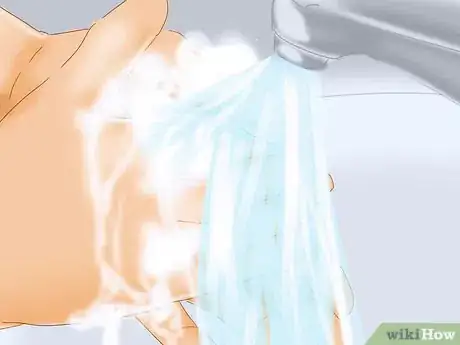
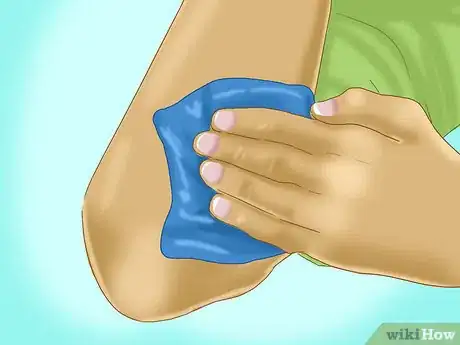
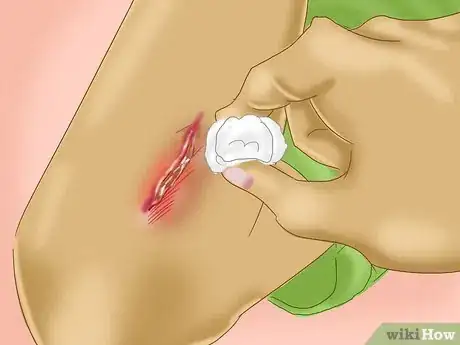
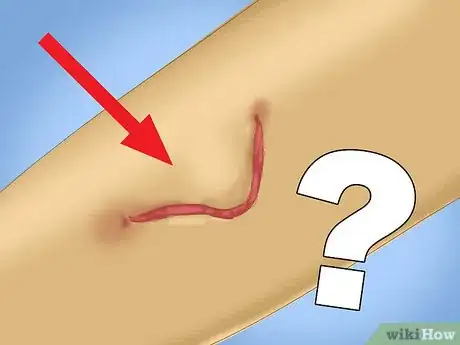

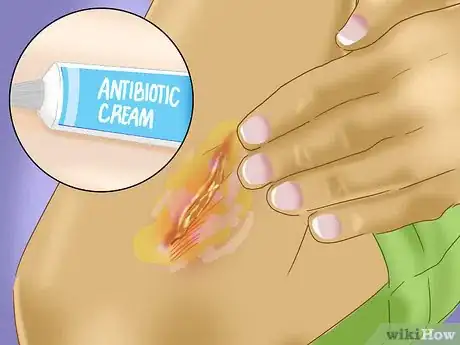


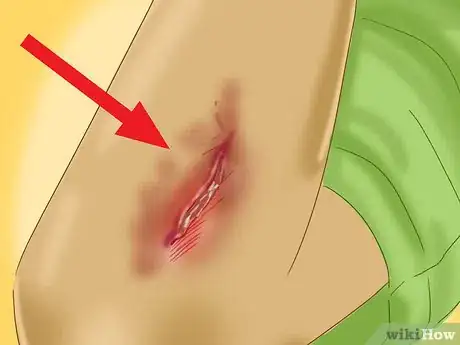
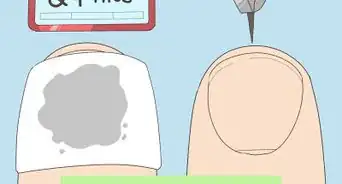
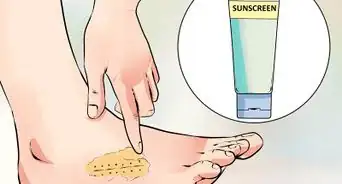

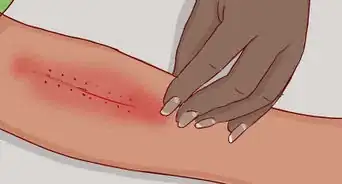
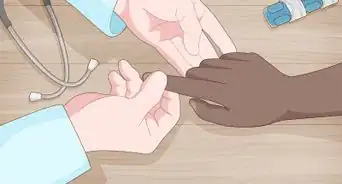
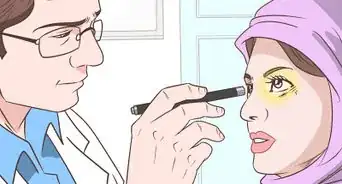

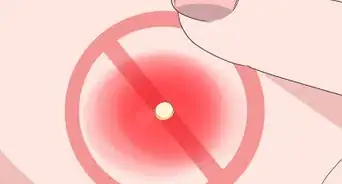


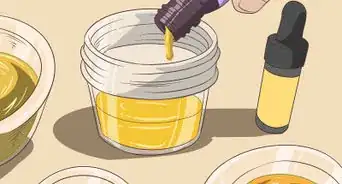










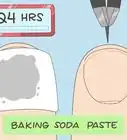
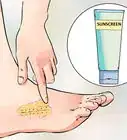





































Medical Disclaimer
The content of this article is not intended to be a substitute for professional medical advice, examination, diagnosis, or treatment. You should always contact your doctor or other qualified healthcare professional before starting, changing, or stopping any kind of health treatment.
Read More...